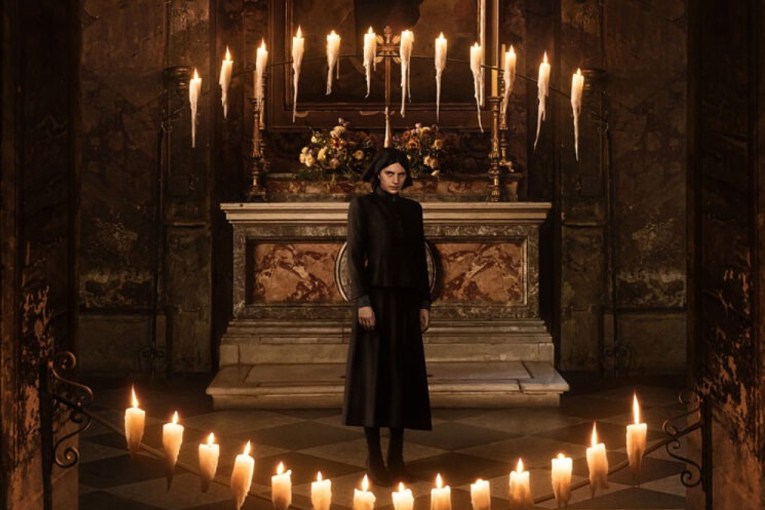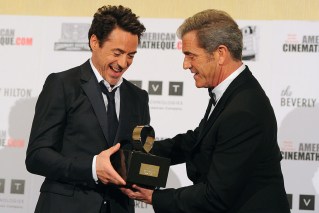Is the Sundance Festival arthouse – or just Hollywood as usual
By Stuart Richards, University of Melbourne
The 2014 Sundance Film Festival starts today in Park City, Utah. Launched in 1981 by Robert Redford and friends, this year’s festival showcases a selection of new independently produced films, all vying to be adopted by the variety of distributors on the hunt for new films. The program provides an occasion to scrutinise just what we mean by independent film in 2014.
While there are the independent distributors in the mix at Sundance, there are also the arthouse subsidiaries of major distribution companies, such as Sony Pictures Classics, Focus Features and so on.
These films are semi-independent in that they are produced independently but are adopted by a major distributor for release. Increasingly, we are seeing these films having a strategic approach to their production and distribution on the margins of the Hollywood conglomerate system.
Quentin Tarantino’s Pulp Fiction (1994) played a key role in redefining what we mean by independent cinema. The semi-independent film sees a redefinition of the arthouse/ mainstream film binary. Most notably, Miramax, the distribution and production company founded by Bob and Harvey Weinstein, capitalised on this alternative market often ignored by mainstream Hollywood.
“Quality” films, such as The English Patient (1996), Shakespeare in Love (1998) and a plethora of Jane Austen adapted works, coupled with edgier titles, such as Pulp Fiction (1994), The Crying Game (1992), and Clerks (1994), saw Miramax and the semi-independent film carve out a whole new film culture and redefine our contemporary understanding of “indie” and “art” cinema.
Sundance’s contemporary line-up is very much a product of this redefinition.
The 2013 Sundance Film Festival saw acquisitions of US domestic rights for numerous semi-independent films. While some were independent companies, such as Relativity Media picking up Joseph Gordon-Levitt’s Don Jon, others are “art house” subsidiaries of major corporations, such as IFC Films picking up Ain’t Them Bodies Saints and Sony Pictures Classics picking up Kill Your Darlings and Before Midnight.
Acquisitions also occur within the documentary competition as well with CNN Films and Magnolia Pictures partnering to acquire the US rights of Blackfish.
Who’s on the 2014 program?
The 2014 line-up sees a mixture of established names and Hollywood outsiders trying to make it big.
The US Dramatic section includes Craig Johnson’s second film Skeleton Twins, starring Bill Hader and Kristen Wiig as estranged twins trying to reconnect. David Zellner’s Kumiko, the Treasure Hunter, stars Pacific Rim and Babel star Rinko Kikuchi who is convinced that the money stashed in the film Fargo is real and embarks on a hunt to find the buried treasure.
Joe Swanberg returns after his success with Drinking Buddies with the film Happy Christmas, featuring notable acting credits in Anna Kendrick and Lena Dunham. Significant buzz surrounds the Indiegogo-funded project Dear White People, which sees four black students and their experiences at a fictional, predominantly white university.
Australia is represented in the World Dramatic competition with Sophie Hyde’s 52 Tuesdays, a coming-of-age story in which 16-year-old Billie is blindsided by the news that her mother plans to transition from female to male.
There are some other exciting queer films in the mix including Hong Khaou’s debut feature film Lilting, starring Ben Wishaw, and Madeleine Olnek’s The Foxy Merkins, which stars and is co-written by Lisa Hass from Olnek’s previous popular film Codependent Lesbian Space Alien Seeks Same.
<
Other notable queer films include the documentary To Be Takei on social media stalwart George Takei, Drunktown’s Finest, Skeleton Twins and Appropriate Behaviour.
Off the program
As always, there are the out-of-competition premieres hoping to drum up the buzz for the coming year.
2013 saw Before Midnight, Don Jon, Stoker and many others secure distribution for the coming year.
This year, John Michael McDonagh returns with Brendan Gleeson as a priest who is threatened with murder during confession, in Calvary. The film Laggies sees Kiera Knightley as a woman in her twenties stuck in a permanent state of adolescence. Gregg Araki will premiere his latest offering, White Bird in a Blizzard, and Zach Braff follows up Garden State with Wish I was Here.
These are just a handful of films whose production companies are hoping to use Sundance as an opportunity to secure distribution for their product.
The film festival business
This new strategic approach adopted by semi-independent films can be seen across Sundance’s program.
Many films in the 2014 program feature bankable Hollywood stars, such as Kristen Wiig, Kiera Knightley, Phillip Seymour Hoffman, Chloe Moretz, Lena Dunham and Michael Fassbender.
Numerous films from the 2013 line-up have since received heavy marketing, such as Before Midnight, Don Jon and Blackfish. These tactics are all traditionally associated with the mainstream, Hollywood film.
This is a far cry from the independent film scene pre Miramax.
Ultimately Sundance is a venue for business. These days many large-scale film festivals, such as Sundance, look less and less like alternative distribution networks and sites of cultural celebration of arthouse cinema.
Instead, there are more and more out of competition blockbuster films, celebrities, glitzy red carpets and accredited journalists. Ultimately, audiences at festivals such as Sundance are now control groups for distributors looking for their next product to market.
While plenty of the Sundance media will focus on the red carpets, celebrity gossip and distribution deals, the festival will continue to allow independent outsiders to access a wider audience otherwise unavailable. There are many films programmed that are by directors who are on the margins of Hollywood, such as the exciting Dear White People.
To have their work seen on such a grand scale is a very exciting thing.
Stuart Richards does not work for, consult to, own shares in or receive funding from any company or organisation that would benefit from this article, and has no relevant affiliations.
![]()
This article was originally published at The Conversation.
Read the original article.








